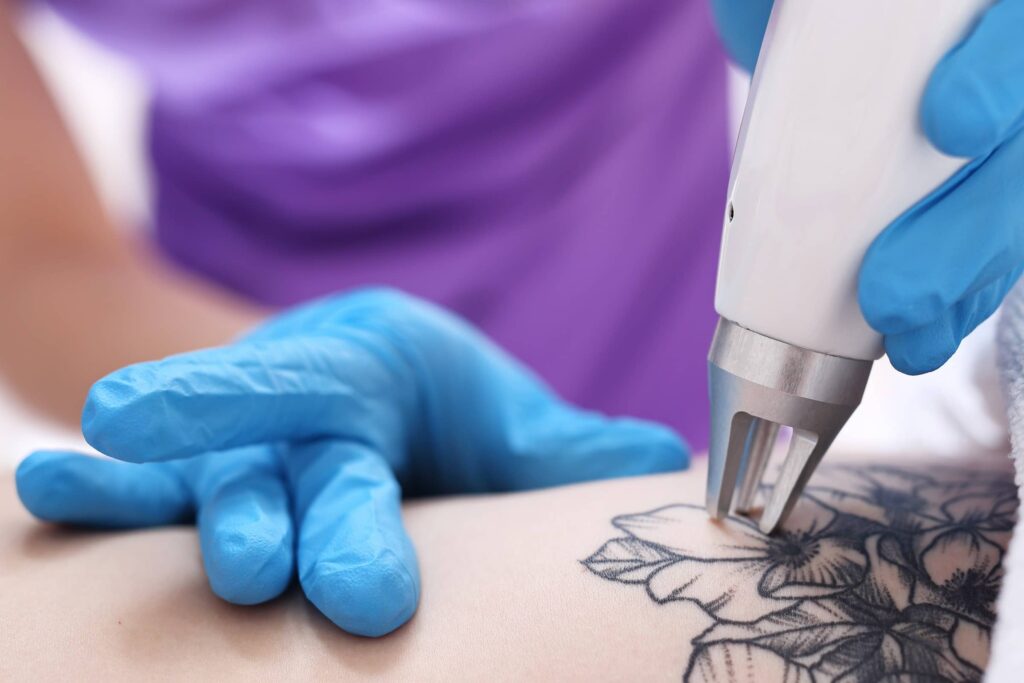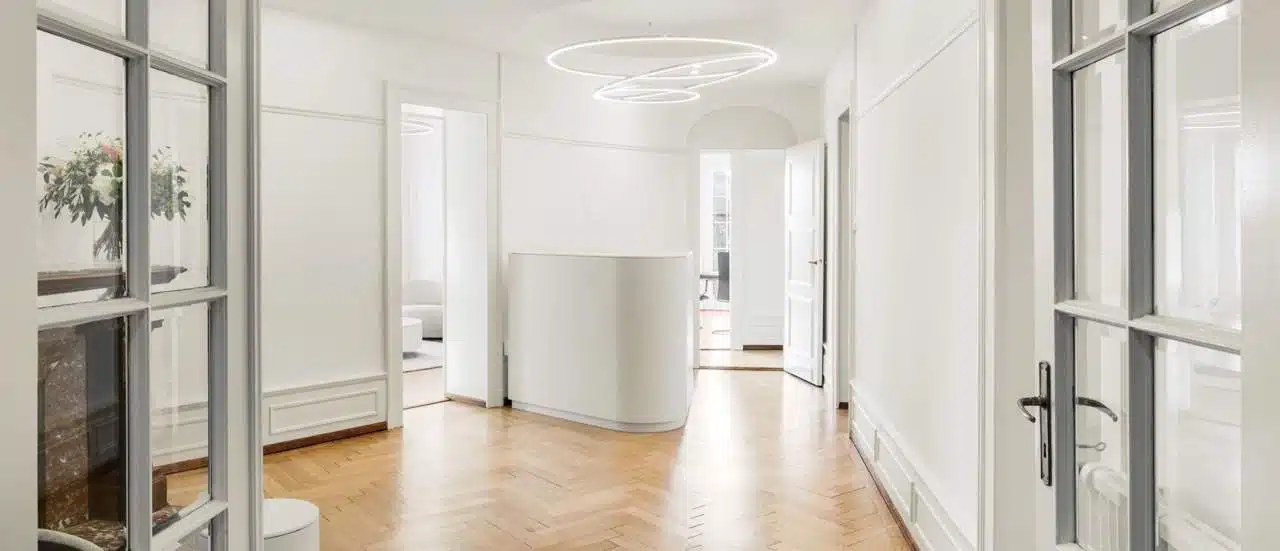Why can a tattoo go wrong or age badly?
No, tattoos are not always permanent! Sometimes missed, sometimes regretted or sometimes badly aged, tattoos can now be effectively removed thanks to technological advances in aesthetic medicine. Laser tattoo removal is the ideal solution for removing a small butterfly on the lower back, the name of a love interest or simply an out-of-date design.
There are many reasons why a tattoo can go wrong or age badly:
It has not been done professionally or under optimum conditions. The lines are badly drawn, the colours are uneven and the technique is simply unsatisfactory.
-
- It has been made with poor quality inks. Time takes its toll and the tattoo deteriorates, fading more quickly and losing its brilliance and legibility.
- The tattoo has been overexposed to UV rays. The sun alters the pigments in the ink, causing a loss of colour or even deformation of the tattoo.
- Changes to the body such as weight gain or skin ageing can alter the appearance of a tattoo.
What does Picoplus laser tattoo removal involve?
For greater efficiency and speed, Clinique Bellefontaine, where Dr Favre practises, is equipped with revolutionary Picoplus laser technology. This is the most powerful, high-performance laser in the world, and much more than a simple Pico laser.
This latest-generation laser system uses targeted laser beams to reduce ink particles in the skin to tiny pieces. These are then evacuated naturally by the body via the lymphatic system. The Picoplus laser offers many advantages for optimal tattoo removal:
- The Picoplus laser is particularly effective because it generates ultra-fast pulses (100 times faster) that allow pigments to be targeted with greater precision while minimising thermal damage to surrounding tissue.
- The result is faster, safer and more effective tattoo removal. Its innovative double-pass technique reduces the number of tattoo removal sessions.
- There are fewer side effects. The risk of scarring or other complications is greatly reduced.
- Significant lightening is already visible after the first treatment.
What are the right things to do after a tattoo removal session?
It is important to understand that the success of the tattoo removal process is not limited solely to the laser session. It is absolutely essential to take the right steps after a tattoo removal session to promote optimal healing and avoid complications. To take care of the treated area, you should :
- Avoid exposure to the sun: UV rays aggravate or accelerate side effects. In all cases, protect the tattoo removal area by covering it or using an effective sun cream.
- Avoid heat sources such as saunas, steam rooms or very hot showers for the first few days after a tattoo removal session. Heat sources can irritate the treated area.
- To avoid infection and irritation, do not rub or scratch the treated area.
Use gentle, alcohol-free, fragrance-free cleansing products on the area to be tattooed. - Moisturise the area by applying a gentle moisturising cream.
- Avoid any strenuous activity for the first few days after a session.
- Listen to and follow the instructions of the professional who will be removing your tattoo.
How many tattoo removal sessions are needed to remove a tattoo?
Each tattoo is unique. The actual number of treatments depends on various parameters, such as the depth of the injection, the amount of ink used, the colours of the tattoo, its size and age.
With a conventional laser, it can take up to ten sessions to achieve good results. Using the PicoPlus laser, on average only 6 treatments are needed to remove a tattoo.


